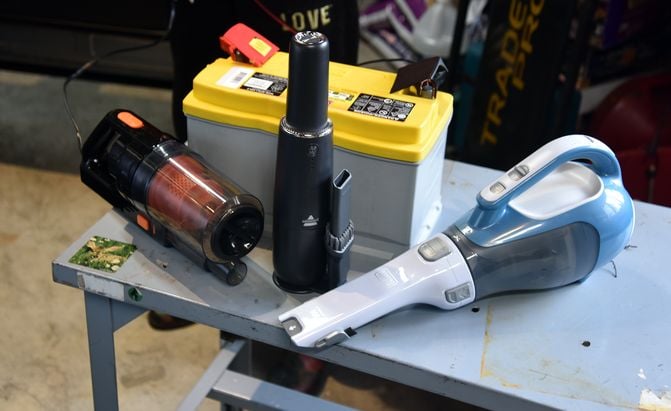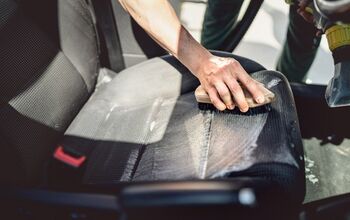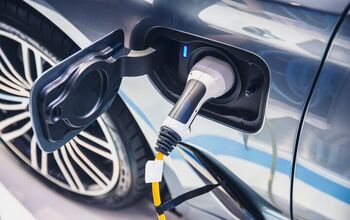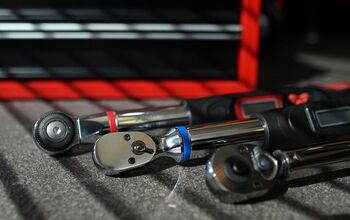The Best Car Vacuum for a Clean Interior

Car vacuums are often very affordable, they list cool features and have great reviews. Then they usually don’t work. The best car vacuum promises to make car cleaning easy: Just plug it into your 12V port or pick it up off the charger, and in just a few seconds you can clean up your seats, floor mats, cupholders, and console. Your actual experience is likely to be a lot more disappointing: When we started testing, we were surprised by just how bad they were. After testing, we didn’t find any 12V car vacuums we thought were worth your money. Struggling to remove dust, crumbs, and dirt, and absolutely failing against pet hair.
Fortunately, there are other kinds of hand held vacuums that do work great for car cleaning. The best car vacuums come from reputable name brands and have enough power to pick up dirt from tight spots in your interior. They come with useful accessories like crevice tools, long hoses, and brushes; and have either built-in lithium-ion batteries or, like the #6 pick Milwaukee, use a cordless tool battery system. The best car vacuum should be ready at a moment’s notice, either just to tidy up, or for a deeper cleaning; and all our picks are just as good for other shop or household use.
There are other good options, too. Wet-Dry vacs, which all threaten the Shop-Vac brand into becoming a generic, have a lot of power and long hoses. These powerful suckers are the first tool any detailer breaks out when starting on a car interior. Plus, they’re very useful both around the shop and for household jobs. There are also conventional handhelds that we like. Either should be part of your car care and detailing kit. Car interior dust can be surprisingly harmful to your health as well, and regular vacuuming is the only way to take care of it.
Why You Should Trust AutoGuide's Product Reviews
We drive the latest new cars, trucks, and SUVs, but did you also know the team at AutoGuide.com tests tires, waxes, wiper blades, and pressure washers? Before we recommend a product as a top pick in one of our popular product lists, our editors put it to the test. We run through all its features, test the claims that the brand makes about each product, and then give an honest opinion on what we like and don’t like from our personal experience. As experts in all-things automotive, from minivans to sports cars, and from portable jump starters to ceramic coating, we want to make sure you buy the product that’s right for you.
How We Picked The Best Car Vacuum
We purchased a selection of the best rated car vacuums in different styles to test, and had several people try them out throughout car interiors. We looked at how well the accessories worked, suction power, convenience, and compared them to other kinds of vacuums for the same jobs. Several cordless rechargeable vacuums do a good job, but all of the 12V vacuums and several of the cordless models that we tested were too bad to recommend. We left one in (with warnings) because it’s the most popular option on sale today. For more information on the best car vacuums, refer to our table of contents.
Table of contents
- 1. Editor's Pick: Black+Decker Dustbuster Hand Vacuum (CHV1410L)
- 2. Best Wet/Dry Vacuum for Cars: Armor All 2.5 Gallon Wet/Dry Vacuum
- 3. Best if Price Doesn't Matter: Dyson V12 Detect Slim
- 4. Best For Pet Hair: Bissell Pet Hair Eraser Lithium
- 5. Best Dustbuster Alternative: Dirt Devil Scorpion Quick Flip Corded Handheld Vacuum (SD20005RED)
- 6. Best Full Size Shop Vacuum: DeWALT DXV10P 10 gallon Quiet Poly Wet Dry Vacuum
- 7. Best for Cordless Tools Battery Systems: Milwaukee M18 FUEL Compact Vacuum (0940-20)
- 8. Not Recommended: ThisWorx Model 1.0 Car Vacuum Cleaner
- Everything You Need to Know About Car Vacuums
- Why Do You Need a Car Vacuum?
- Can I Use My Household Vacuum in My Car?
- Should I Use a Carpet Cleaner on my Car Upholstery?
- Choosing the Right Vacuum for Your Car
- Is a Wet-Dry Car Vacuum Right for Me?
- What’s a Shop Vac?
- What to Look for When Shopping for a Car Vacuum
- How to Care for Your Car Vacuum
- Should I Wash or Vacuum First?
- How to Vacuum Your Car
- Recent Updates:
1. Editor's Pick: Black+Decker Dustbuster Hand Vacuum (CHV1410L)
We think the best handheld vacuum currently available is the Black+Decker Dustbuster. The original small vac brand is still the best. This hand vacuum isn’t just an ideal choice for cleaning cars, but is also great for household use. Weighing just 2.6 pounds, the cordless vacuum can only be used on dry materials, which isn't true for all handheld cordless vacuums, so keep that in mind if you’re shopping for a wet/dry vacuum. It is rated at 15.2 watts with max voltage of 16 volts and has a suction power of 15.2 air watts (AW). The washable dustbowl has a capacity of 20.6 ounces and it’s one of the easiest hand vacuums to empty out and clean. Powering the Dustbuster is a lithium-ion battery that takes about four hours to fully charge. Best of all, charging is easy since it uses a charging base. The company says the battery is capable of holding a charge for up to 18 months, allowing you to conveniently keep it in your car. We've tested six vacuums so far in 2022, and this model of Dustbuster is by far our favorite for cleaning a car. The only drawbacks are that it's larger, and a little louder, than most 12V and some other battery vacuums, so it can be hard to fit into tight places. Otherwise, it outpowers anything this side of a 110V household vacuum, easily picking up small gravel and other debris. A built-in crevice tool works great for getting into seats, cupholders, and other small places, and it has enough power to pull dirt out of floor mats, although it won't do as good a job as a shop vac (or pressure washer). Build quality is also a big step above every 12V vacuum we tested, giving us confidence that it will last for years. With multiple vacuums currently scattered around the AutoGuide Garage, the Black+Decker Dustbuster is the only one we reach for (aside from occasionally a Bissel AeroSlim for tight spots) that isn't a shop vacuum. Black+Decker backs the Dustbuster with a two-year warranty and has customer service and warranty options through web forms and email on the blackanddecker.com site, but we could not find a toll-free number.
Pros | Attachments are part of the vacuum and can't be lost, powerful, recharging stand |
Cons | Larger and more expensive than 12V car vacuums |
2. Best Wet/Dry Vacuum for Cars: Armor All 2.5 Gallon Wet/Dry Vacuum
Don’t care for a cordless, handheld vacuum? If you have easy access to a power outlet and need a wet/dry vacuum, the Armor All 2.5 gallon wet dry vac is a great choice. It’s not overly powerful with a two-horsepower motor, and its 2.5-gallon storage tank isn’t the largest available, but this vacuum is small enough to get inside your car for cleaning. Into tight spots where a full-size portable vacuum would be too big to maneuver. It comes with a 10-foot power cord and since it’s just a 2.5-gallon tank, this vacuum is easy to move around while you vacuum your car. Also included is a six-foot hose, which should help minimize the need for an extension cord. Like other shop vacuums, switching the hose from intake to exhaust easily converts the vacuum to a blower. The vacuum organizes its included accessories in slots as part of a Complete Vac Organization system, including a 2-in-1 utility nozzle, crevice tool, deluxe car nozzle, blower nozzle, detail brush, reusable cloth filter, and reusable foam anti-splash sleeve. A two-year warranty is standard on this small vacuum. The Armor All 2.5 Gallon Wet/Dry vacuum is ideal for car owners who often wash their cars at home and have access to a convenient power outlet. The tank, while smaller than other shop vacuums, should be adequate for your cleaning session. It’s one of the most portable shop vaccums you can purchase, so taking it over to the trash to empty and clean isn’t as cumbersome as larger units.
Pros | Wet/Dry shop vacuum, portable, includes several useful accessories, two-year warranty |
Cons | Corded, smaller tank, shorter cord and hose than full-size shop vacs |
3. Best if Price Doesn't Matter: Dyson V12 Detect Slim
Dyson introduces new models and discontinues old ones about as often as we change our oil. In the four-and-a-half years that we've been reviewing cordless vacuum cleaners, they've gone from our old favorite V7 to the V12. Fortunately, the new Dyson V12 Detect Slim takes a lot of what we liked about the V7—high power, long runtime, and thoughtful design—and puts it into a smaller and lighter package that works better in cars. All of Dyson's vacuums are cordless, and none of them are a pure handheld: They're all stick vacuums with a removeable base unit that converts into a handheld. We think the V12 Detect Slim is the best choice in the Dyson lineup for automotive use, because it's the lightest choice and comes with accessories like a compact roller head and long crevice tool that are perfect for cars. You will still have some trouble maneuvering the big unit in an automotive interior, but the cordless Dyson is far more compact and convenient for most jobs, as well as more useful for non-car cleanups. Dyson has a 90-day money-back guarantee and a two-year parts and labor warranty on the V12 Detect Slim; and it includes a wall dock, charger, four different heads, and the crevice tool. It only weighs 5.2 pounds overall, which is only a little more than the #6 Milwaukee without a battery, and the base unit is a relatively compact 10 x 10 inches. Dyson even tests using the IEC 62885-2 international standard for vacuum cleaners, if vacuum cleaner testing is one of your hobbies.
Pros | Up to 60 minutes runtime, easy emptying, great accessories, powerful |
Cons | Dyson vacuums are loud and expensive, large for inside a car |
4. Best For Pet Hair: Bissell Pet Hair Eraser Lithium
The Bissell Pet Hair Eraser Cordless comes with one thing nothing else on this list has. A power brush. Pet owners know that pet hair, be it long or short, is nearly impossible to get out of your carpet or seat upholstery. The only thing that works is a physical assault, sweeping at the fur to get it to the vacuum's nozzle.
Bissell offers that motorized brush. It won't get into the tightest spots, but for that you have an upholstery tool and a crevice tool in the box. The lithium ion battery gives this machine up to 17 minutes of run time. Maybe not enough to finish your whole car, but enough to get you a very good start.
It weighs just three pounds and has a quiet motor, both of which make it easy to use in the tight confines of your vehicle. This is our top pick if you need to banish fur to the bin.
Pros | Seven-amp motor, quick flip crevice tool, very affordable, variety of attachments, three-year warranty |
Cons | Not extremely lightweight, average length power cable |
5. Best Dustbuster Alternative: Dirt Devil Scorpion Quick Flip Corded Handheld Vacuum (SD20005RED)
Dirt Devil is likely a brand you have heard of when it comes to vacuums, and its Scorpion Quick Flip bagless handheld vacuum is a great choice for cleaning a car. Finished in Dirt Devil’s signature red, it features an integrated Quick Flip crevice tool that makes cleaning tight spaces a breeze. Attached to the vacuum is a 16-foot power cord, which isn't the longest. So you might need an extension. Included with the vacuum is a 2.5-foot hose, a dusting brush, sliding brush, and an upholstery tool. Weighing 3.75 pounds, the Dirt Devil Scorpion is slightly heavier than the Dyson V7 trigger, but it is significantly cheaper. In fact, it’s one of the most affordable car vacuums on our list. It’s powered by a seven-amp motor and comes with a three-year limited warranty, which is the best of the bunch and impressive considering the price of the vacuum. The Dirt Devil Scorpion Quick Flip vacuum is recommended for car owners who are looking for a cordless handheld vacuum that just “does its job” without anything fancy. Its price makes it a compelling option for everybody looking for a simple, affordable solution.
Pros | Seven-amp motor, quick flip crevice tool, very affordable, variety of attachments, three-year warranty |
Cons | Not extremely lightweight, average length power cable |
6. Best Full Size Shop Vacuum: DeWALT DXV10P 10 gallon Quiet Poly Wet Dry Vacuum
Not every household needs a wet/dry vacuum such as this one, but when the AutoGuide Garage needed a shop vac, we went with DeWalt's 10-gallon wet/dry vacuum. Powered by a 5.5-peak horsepower motor, it’s designed for large applications, so whether it’s your work truck that needs cleaning from bumper to bumper, or your minivan filled with spilled cereal, this vacuum will handle it all. We've been so impressed by how quiet and light it is for the power, that we end up using it in place of a household vacuum, especially for big jobs, and a shop vac is part of every workshop. It features five durable rubberized casters at the bottom for smooth swiveling and easy movement. An extra long 20-foot power cord and long seven-foot hose means you have plenty of reach without having to plug or unplug the vacuum as you clean. The exhaust port also functions as a built-in blower port, using the suction hose, if you want to reverse the function of the vacuum. Lastly, the large built-in tank drain makes it easy to clean up liquid messes. When vacuuming wet messes, a washable foam filter keeps water out of the motor. For convenience, there’s large a built-in accessory bag that’s conveniently attached to the backside of the vacuum, allowing you to keep the included extension wands, floor nozzle, utility nozzle, and crevice nozzle organized; and an elastic hook secures the hose in place when not in use.
Pros | Powerful motor, large capacity, rubberized casters for mobility, 20-foot power cord, heavy duty vacuum |
Cons | Corded, may be too large and cumbersome for some users |
7. Best for Cordless Tools Battery Systems: Milwaukee M18 FUEL Compact Vacuum (0940-20)
If you're in the Milwaukee M18 battery ecosystem, the 0940-20 M18 FUEL Compact Vacuum is a natural addition to your lineup. It's a little like our #3 pick Dyson, a brushless, cordless stick vac that converts to a handheld, but without the Dyson price. It also doesn't have the Dyson's cyclonic filtration (interestingly, the old 0082-20 brushed motor version did have cyclonic filtration), nor the Dyson's eye-watering price. Switching to a brushless motor solves one of the main complaints of the previous model, not enough power, while also extending runtime. It comes with six tools, most of which are useful in a car, and a stick for home use. It is large, at about 13 x 6.4 x 11.7 inches, and weighs slightly less than the Dyson—until you add a battery. We recommend at least a 4.0ah battery, not included, to get the most out of it.
Pros | Brushless motor, HEPA filter, converts to a stick vacuum, more than 30 additional compatible accessories available |
Cons | Large, needs additional large batteries and charger |
8. Not Recommended: ThisWorx Model 1.0 Car Vacuum Cleaner
This is not just the best selling car vacuum on Amazon, but one of the best-selling automotive products, period. We've left it in our list for just that reason, but we don't recommend buying it, either for yourself or as a gift. It's very quiet, we'll give it that, but that's because it isn't doing much. It is also very light and easy to clean, although the housing is a static dust magnet. But it isn't good to use. It wouldn't pick up anything heavier than light dust, and lacked the power to suck up anything at all through the extension tube. In fact, none of the accessories seemed to work, because there really isn't any air moving through them. We have no idea why it's so popular, other than it looks interesting? If you really must have one, you can buy the identical vacuum with slightly different colors and accessories from innumerable other brands. Some of those will be cheaper, but they will not be any better.
Pros | Quiet, easy to clean |
Cons | It's a bad vacuum cleaner |
Everything You Need to Know About Car Vacuums
Why Do You Need a Car Vacuum?
Your first instinct might be to just use your household vacuum to clean up your car, and it may do an adequate job depending on the vacuum. Some household vacuums are now cordless and come with a variety of attachments, but they will never be as convenient as a car vacuum. Upright or canister household vacuums will, at the very least, need a hose attachment to help clean your car, and you're unlikely to be use a stick vacuum at all. All large household vacuums are cumbersome and can tip over, making the task of cleaning your car’s interior more difficult than it should be. As you can imagine, household vacuums are designed to clean large surface areas efficiently and quickly. They may work well enough on your car’s floorboards and floor mats, but some home vacuums will have a difficult time getting into hard-to-reach places. Like most things automotive, you need the right tool for the job, which is why a car vacuum is recommended to keep your cabin nice and clean.
Can I Use My Household Vacuum in My Car?
We've certainly done that—hauled our household upright bagged vacuum outside, run an extension cord, hooked up accessory hoses and cleaned a car. But it's cumbersome and inconvenient, and can potentially damage your vacuum as you stretch short and easy-to-tear hoses to reach inside. Stick vacuums are lighter than traditional uprights, but often don't have the optional hoses to reach many spots, or the powerful suction to deal with dirt and gravel from your floors. Canister vacuums are a much better choice, have the best suction of all three types of household vacuums, and are always equipped with longer hoses. You'll still have to deal with getting it, its cord and hoses and accessories out to your car, and potentially scraping it along the ground as you work.
Should I Use a Carpet Cleaner on my Car Upholstery?
No. Our short answer is no. Car upholstery is easy to stain, whether with coffee, kids or pets, but in our testing carpet cleaners do a poor job of removing those stains and often leave marks of their own. Even if you rent a Rug Doctor or the equivalent carpet cleaner with a special upholstery wand, in our experience it won't clean evenly, leaving permanent dark and light spots or strips. If you have seats that need cleaning, it's worth using a professional detailer, and to preserve your car's appearance and resale value, we recommend a high-quality set of waterproof, washable seat covers. If you're able to, you can remove you car's seat fabric and test an area you'll never see, like the underside. If it doesn't stain or discolor, then you can risk using a carpet cleaner on the seating surfaces.
Choosing the Right Vacuum for Your Car
One of the most important factors in picking the right vacuum for your car is determining how your car is used every day. Maybe your vehicle is often used for work and gets wet and muddy, or you have a pet that loves taking rides with you. If you have kids, there’s a good chance they’ll accidentally spill food inside the car. If your car sees heavy duty use, you’ll likely want to pay close attention to the car vacuum you’re planning to purchase. Some vacuums specialize in picking up pet hair, while others will operate wet or dry. Now if none of the above applies to you, then a lightweight, handheld cordless vacuum might suffice. Determining how often you need to clean your car’s interior plays an important role in choosing the right car vacuum. Aside from budget, you’ll want to decide whether you want a corded or cordless car vacuum. Cordless vacuums are generally more expensive and have the added convenience of not being tethered or having to look for a power outlet. The downside, of course, is that they are often less powerful need to be charged after use. If you are unable to vacuum your car within a garage, there are also corded car vacuums that use the 12-volt cigarette lighter in your car. While they may seem to be the best option, they’re not as convenient as cordless vacuums and are often not as powerful as vacuums that plug into a wall. Recently, some automakers have been outfitting their vehicles with AC power outlets, which is something to consider when shopping for a car vacuum. If your vehicle has a power outlet built-in, you could use a corded option without having to fuss with the power outlet in your garage, although you should be careful of draining your battery.
Is a Wet-Dry Car Vacuum Right for Me?
What’s a Shop Vac?
What to Look for When Shopping for a Car Vacuum
Regardless of whether you’re shopping for a corded or cordless car vacuum, you will want to pay attention to a vacuum’s power rating. But don’t be fooled into thinking the bigger the number, the better. Along with wattage, you will want to research its suction pressure, which is often measured in pascals, along with cubic feet per minute of airflow—basically, how hard it can suck and how much it is sucking. You will also want to check whether the car vacuum you’re looking at comes with a variety of accessories. You may not need any of those accessories if you’re using the vacuum for general cleaning, but having additional nozzles and brushes could prove handy if your car sees heavy use. If you’re shopping for a cordless vacuum, pay close attention to its advertised battery life and weight. You might find it uncomfortable to use a heavy handheld vacuum for an extended period of time in awkward positions. If you have a larger vehicle, smaller batteries may not allow you to completely clean your car on a single charge. One aspect that’s often overlooked when shopping for a car vacuum is its tank capacity. For smaller, compact cars, you may not need a large canister. But if you own an SUV or a minivan, you’ll want to make sure you don’t have to constantly empty out the canister while vacuuming your car. Along the same lines, you may want to do some research to see how easy or difficult it is to clean a particular vacuum. You likely don’t want to purchase a vacuum that’s complicated to disassemble and maintain. Prepare to be overwhelmed by the number of manufacturers who offer car vacuums. You’ll likely recognize familiar brands such as Black+Decker, Bissell, and Dyson, but they may not necessarily be the best for your needs. If you’re shopping for a shop vac, Armor All is a brand you likely recognize since the company specializes in car detailing products. Once you’ve decided whether you want a corded, cordless, or shop vac, narrow down your product choices by budget and power. You will also want to pay close attention to the warranty that is offered when comparing vacuums. Sometimes it’s worth it to pay a bit more for a product from an established company, knowing you have warranty support you if something breaks. The last thing you should consider is how easy it is to find replacement parts for the vacuum you’re interested in. Can you purchase replacement filters easily? If you’re looking at a cordless vacuum, are replacement batteries expensive? Lithium-ion batteries degrade over time, so eventually you’ll have to purchase a replacement. You may also want to check if accessories can be purchased separately, in case you only need one specific item.
How to Care for Your Car Vacuum
Making an investment into a car vacuum may not be cheap, so you’ll want to take a few steps to maintain and keep your vacuum clean. If your car vacuum has a filter, change it on a regular basis and more often if you’re using the vacuum frequently. Some filters can also be washed, so you’ll want to check your specific product to see if that’s an option. Make sure to empty out your vacuum canister every time you’re done cleaning, even if it’s just a little amount of debris or dirt. This is especially important if you’re using a wet-dry vacuum, since leaving anything wet for a long period of time can lead to mold and mildew. If you’re using an attachment that has a brush or roll, make sure you clean it on a regular basis. Over time, certain objects can get caught in the brush or roll, preventing it from spinning and performing as effectively as it should and potentially burning out a motor. If you’re using a vacuum with a hose attachment, make sure nothing is stuck inside the hose after each cleaning, so you don’t cause a clog next time you use the vacuum.
Should I Wash or Vacuum First?
We're fans of the "work your way out" philosophy. Our theory is that when you're working on the interior, you're more likely to get the exterior dirty by accident. And when you're done inside and move to the exterior, you don't have any reason to open the doors until your cleaning is finished and the whole car is ready. On the other hand, we also know very good detailers who start with the exterior, because they feel that way they won't track anything into the exterior when they start. We think that increases the chance of bringing something wet into the interior, but the professionals know what they're doing. Either way, no one recommends doing part of one and then the other. Do the entire interior or exterior, then move on to the rest. Which you choose first depends on your preference, your style, and your situation.
How to Vacuum Your Car
Once you’ve chosen a car vacuum that suits your needs, it’s time to get cleaning. Vacuuming a car may sound like a straightforward task, but here are some tips to make sure you properly do the job:
- Before you start, open all the vehicle’s doors so it’s convenient to access every part of your interior and allow any dust you kick up to circulate out. You’ll also be able pull the vacuum’s hose straight through the cabin instead of going around the car.
- Make sure to clear out trash and other large items prior to vacuuming. Not only will this make vacuuming easier, it ensures your vacuum won’t get stuck on large debris—plus you won't suck up any dollar bills. Keep an eye out for sharp objects that can damage your vacuum, and loose items such as strings or hair. While strings or hair shouldn’t clog or damage your vacuum, it could over time make a mess out of an attached brush or roll.
- Remove all your floor mats and trunk liners if you’re planning to also vacuum your trunk. Most modern vehicles have hooks or eyelets that are used to secure the floor mat in place.
- If your car vacuum came with a brush attachment, use that to vacuum. While suction alone does an adequate job, a brush attachment will help lift up dirt and debris stuck in your car’s carpet.
- Thoroughly vacuum the floorboards of your car and make multiple passes to ensure the carpet is free of debris. When vacuuming the front of the car, slide the driver and passenger’s seats as far back as possible so you can cover more surface area. Do the opposite when vacuuming the back of the car.
- If you have cloth seats, make sure to run the vacuum over the upholstery. Recline the front seats so you can get in between the seat and seat back.
- Use your crevice tool to get into the seams of the seats, between them and the consoles, into door pockets, and any other hard-to-reach area.
- You can also run your vacuum along the dash to pick up any dust or debris, but be careful not to scratch it. If your dash is made of soft plastic, just use a microfiber towel instead.
- For the floor mats that you removed earlier, shake them out first (or use your shop vac to blow then off) before vacuuming each mat one by one. Properly re-install each floor mat on their hooks once they’ve been vacuumed. This keeps them from interfering with your accelerator or brake pedal.
- Lastly, don’t forget to vacuum the trunk. Since it is often the place where large objects are stored, you’ll want to maintain it from time to time.
- After you’re done cleaning your car, make sure to take a few minutes to clean your vacuum by emptying the canister and making sure nothing is stuck in the hose or brush attachments.
Recent Updates:
May 3 2023, Removed BISSELL AeroSlim Cordless Vacuum. Added Bissell Pet Hair Eraser. January 3, 2023: Removed promoted product recommendation. December 21, 2022: Removed discontinued Dyson V7 and Milwaukee 0082-20, added Dyson V12 Slim and Milwaukee 0940-20. December 15, 2022: Updated product links. October 27, 2022: Updated product links. September 1, 2022: Added ThisWorx back to list as an example of what not to buy.
We are committed to finding, researching, and recommending the best products. We earn commissions from purchases you make using the retail links in our product reviews. Learn more about how this works. AutoGuide may accept review samples for testing and evaluation. Suppliers of review products do not have any input into our conclusions and are not allowed to review our content before publication.

After completing a degree project in automotive design, Dave wrote and photographed for almost a decade in print car magazines (remember those?), before transitioning to digital. He now subjects a series of old high-performance cars to the roads and weather in Vermont and wonders why they're always expensively broken. Please stop when you see him crawling under one on the side of the road.
More by David Traver Adolphus











































Comments
Join the conversation
I would say one of my life's dreams is to find a 12 vac, battery or corded, that has enough suction to be able to stop using my old wet/dry vac that can hold about 15 pounds on the end of the hose, and is small enough to get into places I need to get into. I got one that cost a lot of money, claimed to have "very strong suction" and it was about the same as the Dustbuster in the article. I have one of those, too, and in the car it's pretty useless, but fine at home for a lot of things. Most of the time, I pay the price and go to the car wash across the street from my apartment and pay the $1 for a not nearly long enough run to get the job done. Most of the time, it costs me $3 to suck up all the pine needles, crumbs, bits of paper, and other junk my car seems to be full of. Oh, the "ThisWorx" vac is just sad. I gave mine away, nearly useless. So far, the best 12V battery powered vac I've tried is the Milwaukee 0960-20 M12 Fuel wet/dry vac. You HAVE to get the bigger cap batteries for it, it will shut down on the 2.0 amp batteries. I use a couple of different 4.0 amp "clone" batteries and they work just as well as the "real" Milwaukee ones, for about 1/3 the price. The Milwaukee factory chargers are like $15, so there is no excuse to not have one for every tool you might have. With one of the larger batteries, my Oscillating multi-tool, electric screwdrivers, and rotary tool will do almost any job on one charge. The vac doesn't run all that long on high though, and it seems to take 2 batteries to completely clean my car up.
Exploring the Doosan Excavator for sale I stumble on your website and it has been an insightful journey. Your detailed insights and reviews are invaluable for anyone seeking in-depth information about these vehicles. As an enthusiast myself, I appreciate the effort you've put into curating this category. Looking forward to more engaging content from you